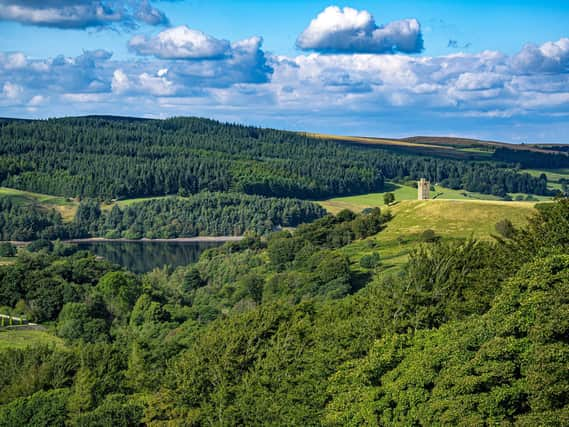Boot's Folly in Sheffield part of Peak District stands tall and proud by Bradfield Moor and Strines Reservoir


Surrounded by woodland and water, Boot’s Folly stands tall and proud in the verdant landscape of the Peak District.
The monument overlooks Bradfield Moor and Strines Reservoir, offering impressive views of both.
Advertisement
Hide AdAdvertisement
Hide AdAlso known as Strines Tower or Sugworth Tower, it was built in 1927 by Charles Boot, the son of the founder of local construction company Henry Boot PLC, just inside the Yorkshire border close to Sheffield.
Boot (1874-1945) lived at Sugworth Hall in the valley below.
It’s believed the monument was constructed to provide work for Sugworth Hall’s workmen during The Depression in the late 1920s – a detail which seems likely given Historic England’s record of it as a “job creation scheme”.
However, there is also a theory that Boot built the tower so he could see High Bradfield churchyard where his wife, who had died in 1926, was buried.
Advertisement
Hide AdAdvertisement
Hide AdIt stands 45 feet high and can be seen across the hills north-west of Sheffield between Bradfield and Strines and is now Grade II-listed.
The square tower with castellated top and flagpole was constructed using leftover stone from nearby farms.
According to Historic England, 17th century material was re-used by its builders from the former nearby Lower Holes Farmhouse.
There was a spiral staircase to the top, but this was removed some years ago after a cow reportedly climbed the stairs and became stuck.
Advertisement
Hide AdAdvertisement
Hide AdBut the reservoir itself was constructed before the folly, in 1869, after the Sheffield Water Committee made the decision to build four reservoirs in Bradfield Dale to impound water from the surrounding moorland to provide for Sheffield’s growing needs.
Sheffield had previously received its water supply from the Crookesmoor dams, though by the mid-19th century these were becoming inadequate.
The landmark is no doubt an interesting stop-off for the area’s many visiting walkers heading for a day out to the reservoir or the nearby hills.
Technical details: Nikon D850 camera with a 70-200mm lens, exposure of 1/800th of a second at f11, ISO 250.
Advertisement
Hide AdAdvertisement
Hide AdSupport The Yorkshire Post and become a subscriber today. Your subscription will help us to continue to bring quality news to the people of Yorkshire. In return, you'll see fewer ads on site, get free access to our app and receive exclusive members-only offers. Click here to subscribe.